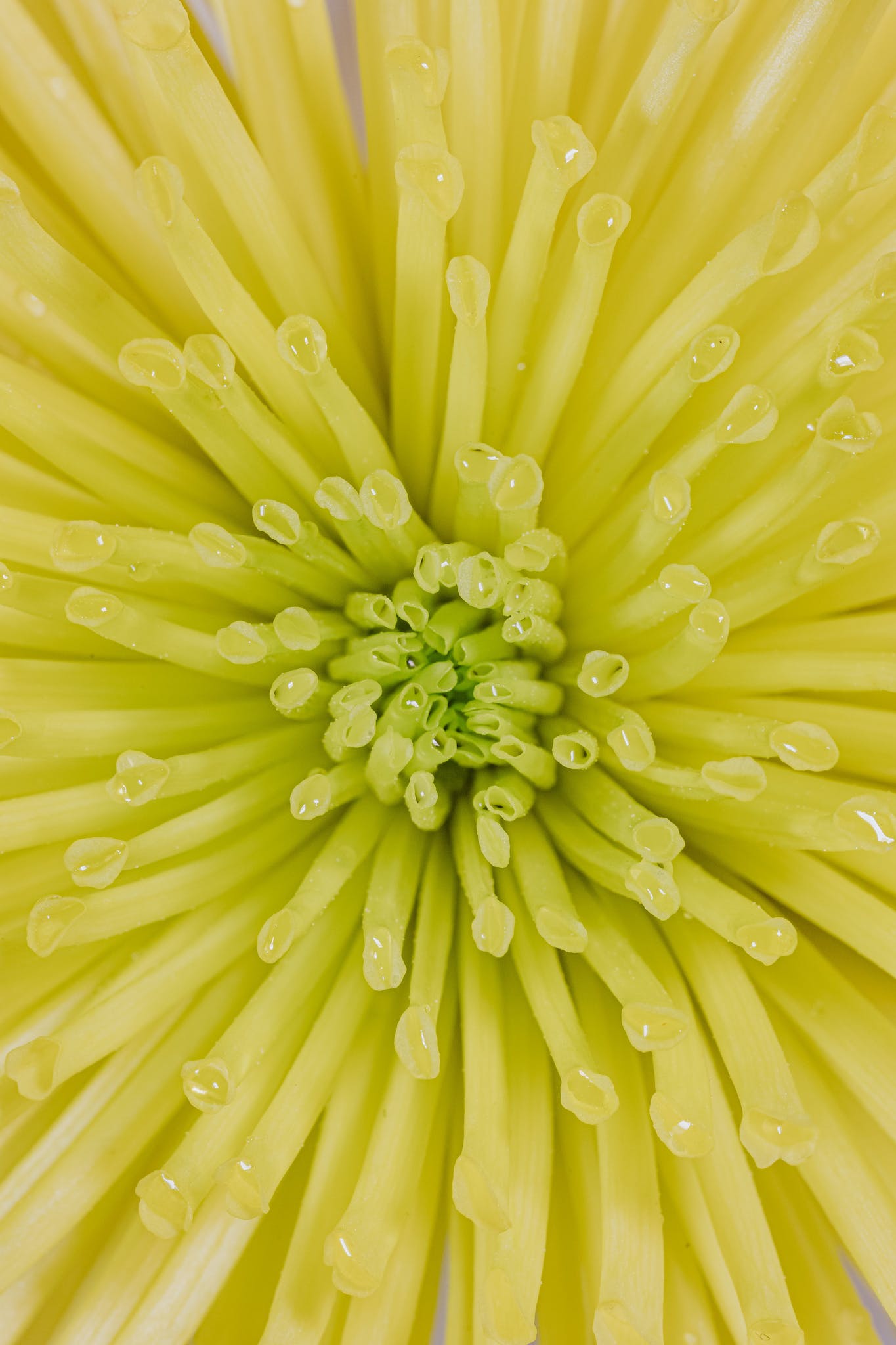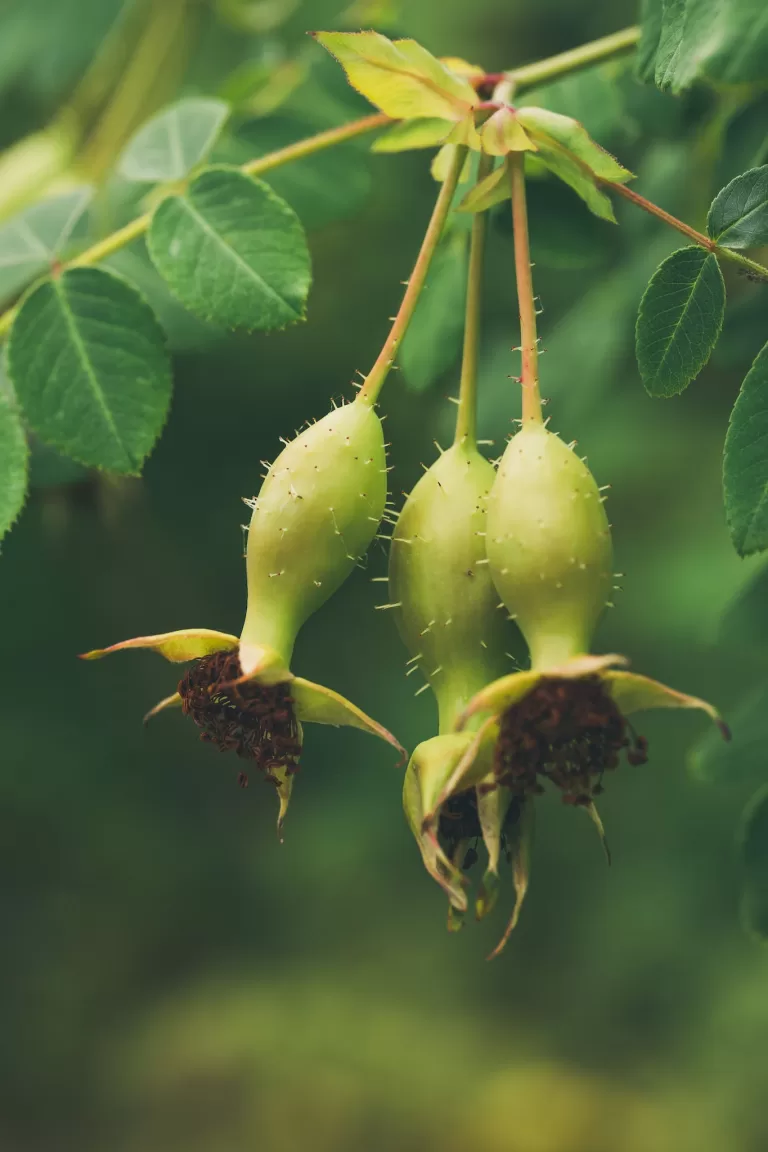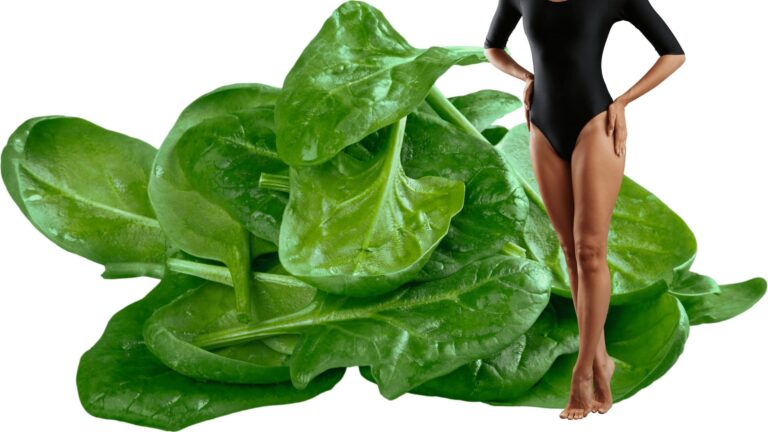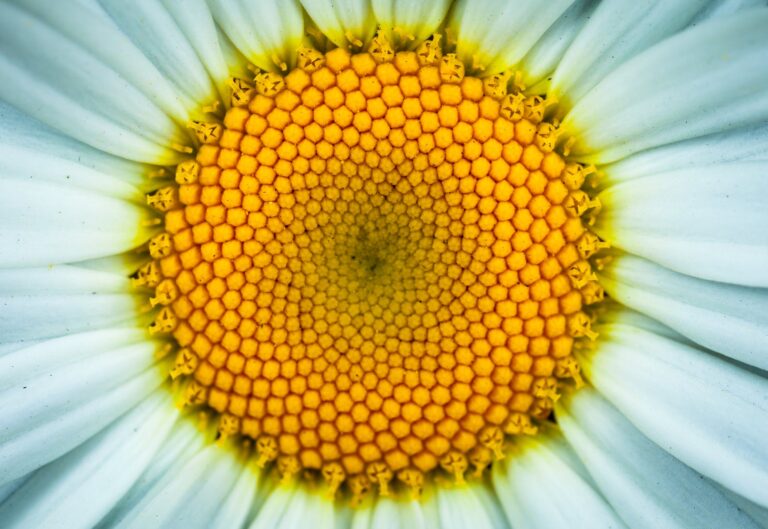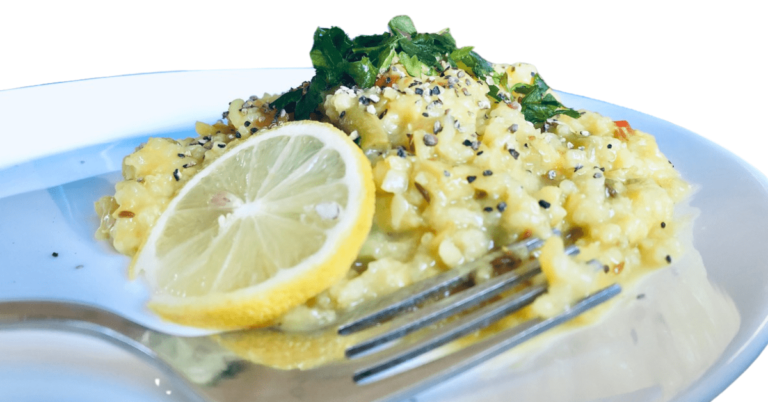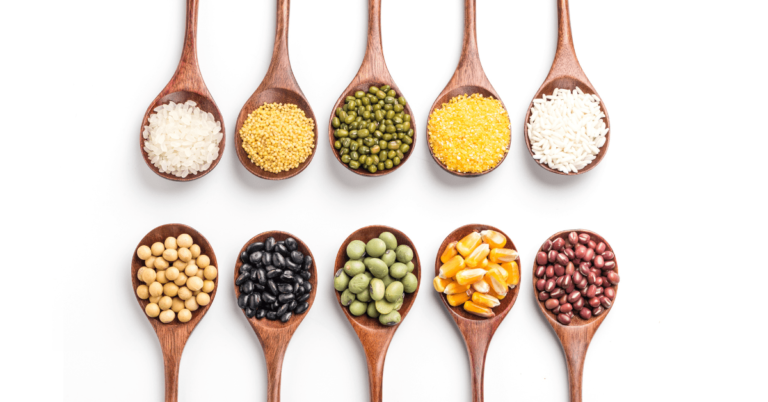What is Dandelion Tea Good For: Better GI & Stimulant
Dandelion tea, also known as Tisane, is a type of herbal tea that has been recognized for its various therapeutic effects.
The roots of the dandelion plant contain probiotic elements that can stimulate the gastrointestinal system (GI) and are, therefore, associated with several digestive benefits. The plant is also documented as a kidney stimulant and, subsequently, for its diuretic action.
Traditional sciences have a long history of medicinal use and today several reputable studies recognize Dandelion’s therapeutic benefits.
Key Points In This Article
This article provides an overview of the medicinal and therapeutic benefits of Dandelion tea, including its bioactive compounds, case studies, consumption methods, and Ayurvedic uses.
Dandelion: Taraxacum Officinale
Dandelion is a perennial plant with seeds, leaves, flowers and roots. Its botanical name is Taraxacum Officinale which implies ‘medicinal.’
Taraxacum officinale, commonly known as the dandelion, belongs to the Asteraceae family and the Cichorioideae subfamily.
In Russia, India, and China, dandelion has been used in ethnopharmacology as a traditional folk medicine because of its hepatic and hyperglycemic effects, Wirngo et al. (2016).
Bioactive Compounds
Dandelion is a great source of phenolic acids like chicoric and chlorogenic acids, flavonoids, including luteolin derivatives and quercetin, and terpenes, such as sesquiterpene lactones.
It also provides a rich supply of vitamins A, C, E, K, and B, and minerals like calcium, sodium, magnesium, iron, copper, silicon, zinc, and manganese (Olas, 2022).
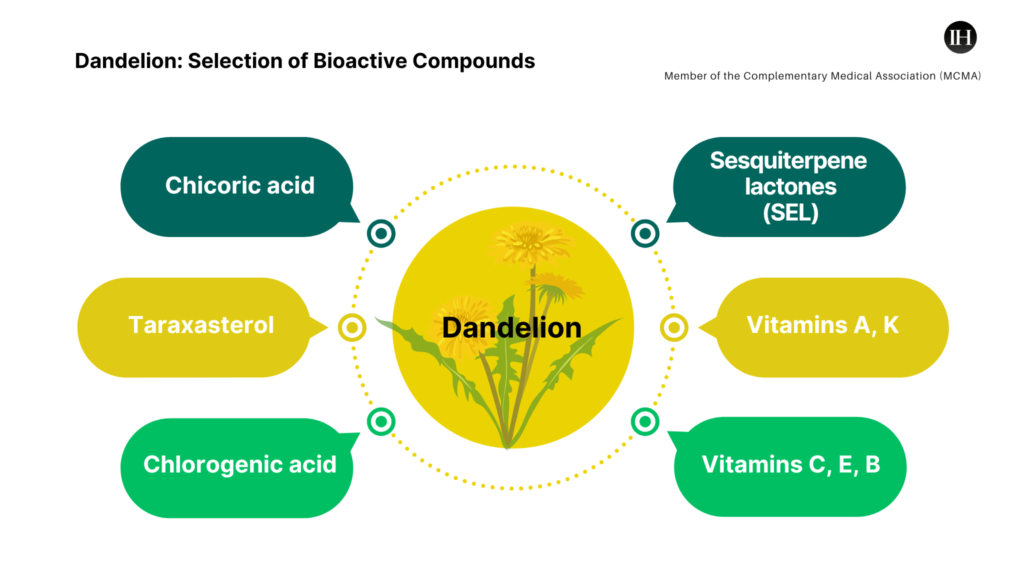
As suggested by Wirngo et al. (2016), a study on the physiological effects of dandelion in type 2 diabetes was published in the Rev Diabet Stud journal (Vol. 13, Issue 2-3, pp. 113-131);
The active components in Dandelion are found within the root, leaf, stem, and flower components, such as B-sitosterol and chicoric acid in leaf and steam, chlorogenic acid and luteolin 7-O-glucoside in flowers, and taraxasterol and caffeic acid in roots.
However, some compounds may be found in more than one part of Dandelion, like caffeic acid in root and flowers, which are some of its dominant components.
Dandelion Parts Used
Apart from tea, dandelion can be consumed in various forms, such as extracts from its roots, leaves, and flowers. Depending on the part of the plant used, these extracts can vary in potency.
Moreover, dandelion is also consumed as a dietary food in the form of greens by several regions.
Physical Characteristics Of Dandelion
Dandelion has bright yellow flowers and easily recognisable clock seedheads when compared to other wildflowers.
Here are some of its physical characteristics:
- Dandelion is a herbaceous perennial flowering plant.
- The yellow flowers transform into round balls of silver tufted fruits known as dandelion clocks.
- This plant species is indigenous to Europe and Asia.
- Now, it has become naturalized in various other regions around the world.
- Parts used: seed, stem, flower, petals, leaf.
In French, the Dandelion plant is known as “dent de lion” or “lion’s tooth” due to its jagged leaves.
A plant with multidirectional health-promoting effects and a rich source of secondary metabolites, including phenolic compounds
Olas, B. (2022)
The next sections examine the plants use as a tea, particular compounds and therapeutic effects
The Dandelion Tea For Therapeutic Actions
Tea made from Dandelion is mainly from its leaf or root. Dry leaves are readily available. Typically, they are steeped in hot water for 3-4 minutes, sieved, and then taken as tea. Other parts of the plant, such as powdered root, are also used in tea.
Dandelion tea has a slightly bitter and mildly pungent characteristic (depending on tea strength) but may also have a mild sweet aftertaste.
Fresh-leaf tea is also consumed for several reasons depending on individual health status.
| Flowers | Leaves | Root |
Kania-Dobrowolska and Baraniak (2022) suggest that;
Approximately 100 g of fresh leaves contain 88.5 g of water, 19.1 g of crude protein, 6.03 g of crude fat, 10.8 g of crude fibre, 0.67 g/100 g dry matter of calcium, 6.51 g/100 g dry matter of potassium, 3.99 g/100 g dry matter of zinc, 12.6 mg/100 g dry matter of tocopherols, 156.6 mg/100 g dry matter of L -ascorbic acid and 93.9 mg/100 g dry matter of carotenoids.
The following case study details the dandelion’s diuretic actions.
Case Study On The Diuretic Effects Of Dandelion
Rácz-Kotilla et al. conducted a study on the diuretic effects of dandelion in vivo. They found that the leaf was a better diuretic (urine output) and saluretic than the root (excretion of salt and water from the body). They even reported that the leaf was comparable in effectiveness to furosemide (also known as Lasix), a commonly used diuretic medication.
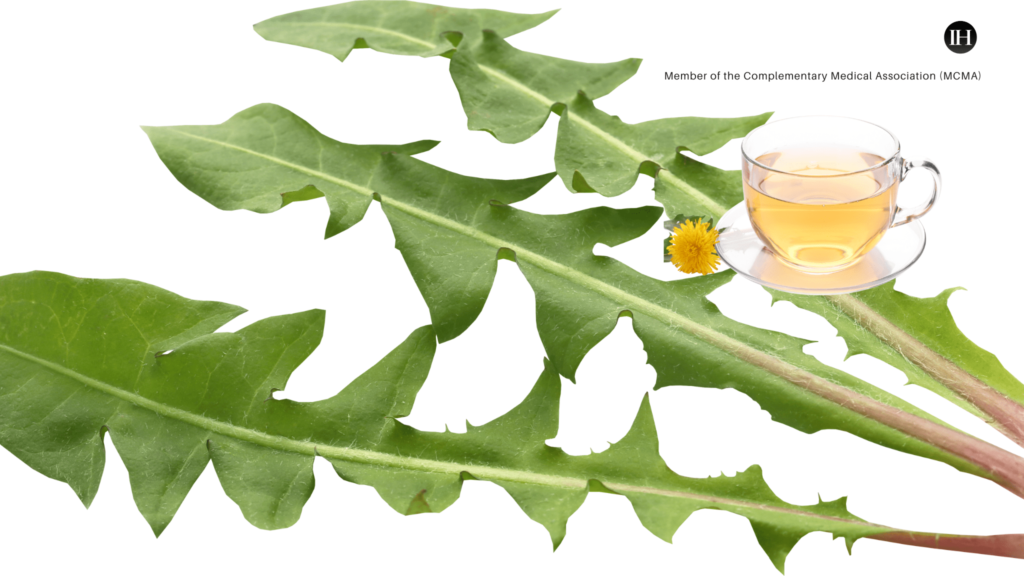
Inulin, A Prebiotic. Other Compounds For Liver, Gallbladder, Kidney
Dandelion root is rich in inulin, a prebiotic substance; it is a soluble fibre.
This soluble fibre is resistant to digestion in the small intestine. Instead, it makes its way to the large intestine, where it acts as a source of nourishment for beneficial bacteria.
Due to its rich natural inulin content, Dandelion root is a significant source of this essential nutrient. The consumption of dandelion roots has been associated with probiotic, hypoglycemic, and immune-boosting effects (Olas, 2022).
Terpenoid & Bitter Sterol
Dandelion has been used to cure liver and gallbladder disorders, which is attributable to its content of terpenoid and bitter sterol components such as taraxacin and taraxacerin (4.2 Anti-inflammatory action, Wirngo et al. (2016).
In traditional science, dandelion tea stimulates the liver and gallbladder and encourages anti-inflammatory and antioxidative effects due to the matrix-type interaction of its active compounds.
Blood Purifying Actions
According to a study conducted by Fan et al. (2023), Dandelion has been found to act as a blood purifier, clear heat, detoxify the body, activate blood circulation, and dispel stasis. Dispelling stasis refers to the substance’s ability to promote the flow of blood and energy throughout the body, which can alleviate pain and other symptoms associated with stagnation.

Dandelion Greens (Raw) Nutritional Profile
Subsequently, Dandelion Greens have a substantial nutritional content and compounds. Generally, raw or cooked greens are safe to eat.
Here are some key nutritional data from the United States Department of Agriculture;
| Bioactive Nutrient | 100 gram of Dandelion provides (approx) | Measurement |
|---|---|---|
| Protein | 2.7 | g |
| Calcium, Ca | 187 | mg |
| Iron, Fe | 3.1 | mg |
| Magnesium, Mg | 36 | mg |
| Phosphorous, P | 66 | mg |
| Potassium, K | 397 | mg |
| Sodium, Na | 76 | mg |
| Vitamin C, total ascorbic acid | 35 | mg |
| Folate, total | 27 | ug |
| Choline, total | 35.3 | mg |
| Vitamin A, RAE | 508 | ug |
| Carotene, beta | 5850 | ug |
| Carotene, alpha | 363 | ug |
| Vitamin A, IU | 10200 | IU |
| Vitamin E (alpha tocopherol) | 3.44 | mg |
| Vitamin K (phylloquinone) | 778 | ug |
Potassium In Dandelion Leaves
Dandelion leaves are also believed to positively affect the cardiovascular system due to their high natural potassium content (397 mg potassium/100 g). Indeed, increased potassium intake with food (about 3500 mg/day for an adult) has lowered blood pressure (Olas, 2022).
How: Potassium helps flush out excess sodium from the body and promotes urine excretion, which can raise blood pressure. It also helps to relax the walls of blood vessels, reducing blood flow resistance and lowering blood pressure. Consuming potassium-rich foods can be an effective way to reduce blood pressure levels naturally.
However, it may not be suitable for individuals with impaired renal functions.
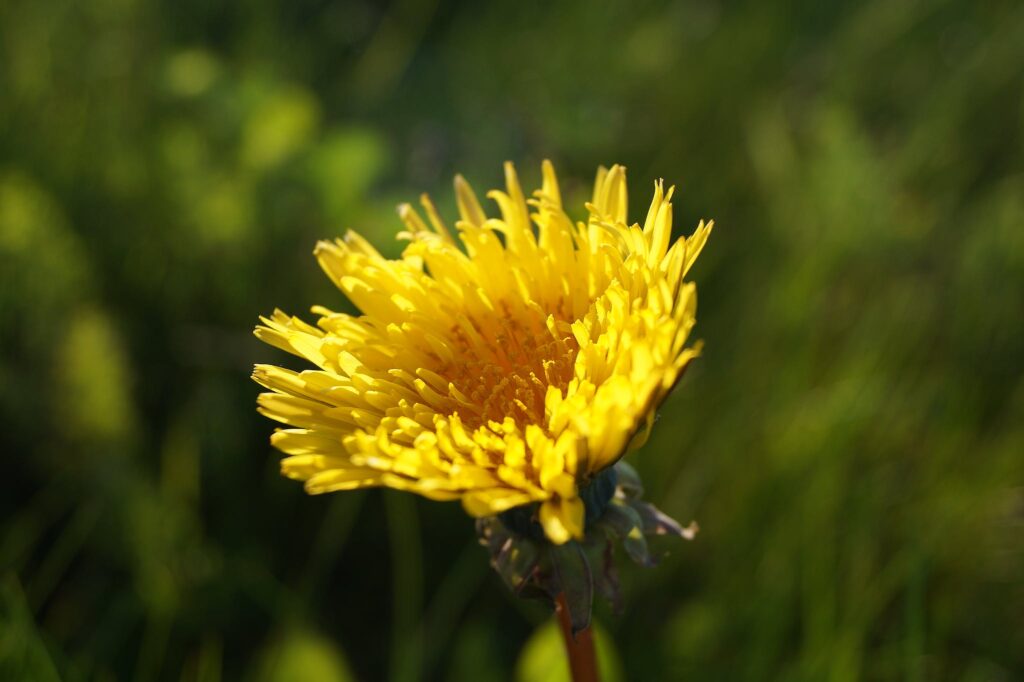
Lutein & Zeaxanthin In Dandelion
Carotenoids are pigments that give yellow, orange, and red colour to, plants (flowerheads), fruits and vegetables their colour.
Lutein and zeaxanthin play crucial roles in plant pigmentation and eye health. They protect the eyes from harmful blue light and help prevent age-related vision loss.
Lutein + Zeaxanthin
100 gram of Dandelion provides approximately 13600 ug (source: USDA)
According to (Mrowicka et al., 2022), “The protective effects of carotenoids are mainly related to their defence against oxidative stress and ability to scavenge free radicals. Lutein and zeaxanthin are the only dietary carotenoids that accumulate in the retina, specifically the macula, and are called macular pigments.”
Vitamin A In Dandelion
In addition to Carotenoids, Dandelion contains a substantial amount of natural vitamin A. Vitamin A is a fat-soluble nutrient. This nutrient is crucial in maintaining healthy vision, promoting healthy skin, and supporting immune system function.
It also acts as an antioxidant, which means it helps to protect the body from damage caused by harmful molecules called free radicals.
Vitamin A, RAE
100 gram of Dandelion provides approximately 508 ug (source: USDA)
Beta Carotene In Dandelion
The body converts the vitamin A carotenoids found in fruits, vegetables, and other plants into vitamin A.
Beta-carotene is the most common provitamin, A carotenoid found in foods; Beta carotene, found in dandelion, is a type of carotenoid, a pigment that gives plants their bright colours. It is a precursor of Vitamin A. Dandelion is a good source of natural beta-carotene;
Carotene, beta
100 gram of Dandelion provides approximately 5850 ug (source: USDA)
It is known to have antioxidant properties that help protect the body against damage caused by free radicals.
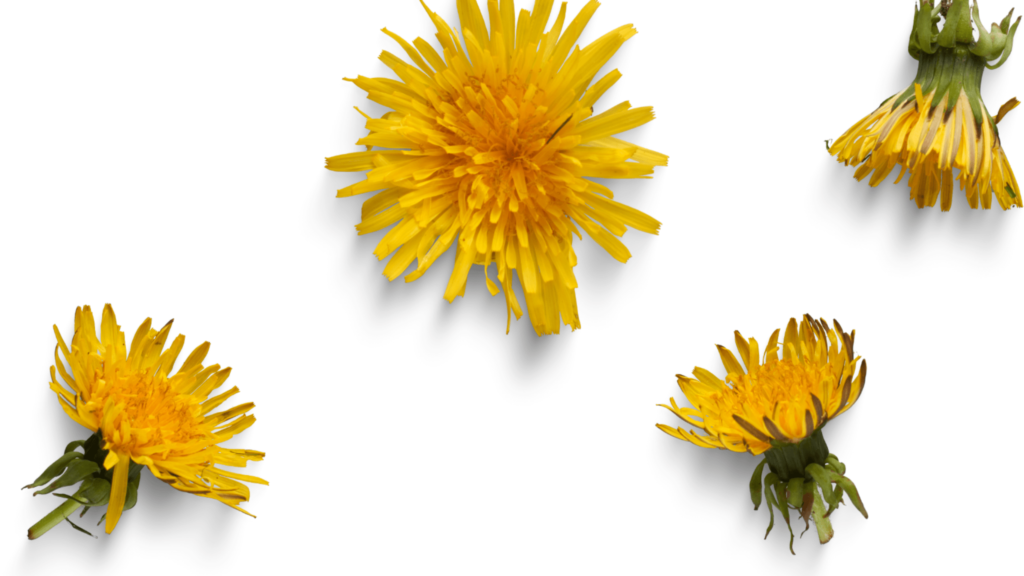
Sesquiterpene Lactones (SEL) In Dandelion
Dandelion contains an important bioactive constituent known as sesquiterpene lactones (SEL).
These natural compounds are found in various parts of the plant, with the highest concentrations in the roots. SEL has been linked to various biological activities, such as anti-inflammatory, antioxidant, and anticarcinogenic effects.
The anti-inflammatory properties of sesquiterpene lactones work by inhibiting the production of pro-inflammatory cytokines and enzymes, thus reducing inflammation and pain.
Moreover, sesquiterpene lactones have antioxidant properties, which help protect cells from damage caused by free radicals.
Phytotherapeutic Actions In Dandelion
According to (Olas, 2022) & (Wirngo et al., 2016) here are some terms associated with the therapeutic properties of dandelions:
| Anti bacterial | Antihyperglycemic | Antimicrobial |
| Fungicidal | Anti-inflammatory | Hypolipidemic |
| Anti oxidative | Immunostimulatory | Action in digestion, glycolysis |
| Anti obesity | Anti platelet | Anticoagulant effects |
| Cardioprotective actions | Caffeine substitute | Detoxifying |
Glycemic Index
The Glycemic Index (GI) and Glycemic Load (GL) of cooked, boiled, drained, and unsalted dandelion greens are estimated to be low-GI foods.
Furthermore, there a several reports that establish a series of anti-diabetic effects of Dandelion;
For example, Wirngo et al. (2016) suggests that “the bioactive components in dandelion have demonstrated a series of anti-diabetic effects, which are due to the pharmacological actions of components such as sesquiterpene lactones, triterpenes/phytosterols (taraxasterol), phenols, flavonoids, and phenolic acids.”
Considerations: Selecting A Dandelion Source
An organic Dandelion source suggests that it is devoid of harmful chemicals, pesticides, or fertilisers, rendering it to be body-friendly and environmentally friendly.
Understanding Basic Dandelion Measures
(Wirngo et al., 2016) Documents the following rudimentary dose ranges for Dandelion leaves or root consumption;
- Fresh leaves 4 -10 g daily
- Dried leaves 4 -10 g daily
- Fresh roots 2- 8 g daily
- Dried powder extract 250-1000 mg four times a day
(The European Commission and the British Herbal Pharmacopoeia suggest these doses).
According to Ayurveda, 1-3 gram powder of the root and stem of dandelion is used. For a decoction, around 25-50 ml is taken. The amount, dose, and frequency depend on individual health status and requirements.
Ayurveda On Dandelion
Ayurvedic Sciences (Easy Ayurveda: Dr Hebbar et al) suggest that dandelion is a helpful tea for balancing Kapha, Pitta, and Vata constipation in some cases.
The recommended daily dosage of Dandelion decoction usually falls between 10-20 ml, depending on the individual’s needs.
The plant is extensively used in traditional sciences because of its effective compounds, therapeutic actions, and availability.
Summary
In summary, Dandelion tea, derived from the dandelion plant’s leaves, roots, and stems, serves as a sophisticated and nutritious natural source, providing a wide range of essential nutrients.
Dandelion contains several compounds, such as phenolic acids like chlorogenic acid and chicoric acid, flavonoids like luteolin derivatives and quercetin, terpenes, sesquiterpene lactones, and several other compounds.
These compounds exhibit strong anti-inflammatory and anti-oxidative actions and therefore are recognised universally as helpful for several therapeutic applications.
Dandelion has various therapeutic properties, including antioxidant and cardioprotective effects. Its therapeutic actions are also attributed to the complex interplay of its compounds, which have a matrix-like effect when consumed.
A study by Wirngo et al. (2016). emphasises its anti-inflammatory effects on liver issues. Subsequently, the traditional sciences, such as Ayurveda, have extensively documented the botanical properties of dandelion as a gastrointestinal therapeutic with strong purifying properties.
In French, it is referred to as dent de lion, “Lion’s Tooth”, and its botanical name implies “medicinal.”
Precautions & Suitability
Precautions and personal responsibility are crucial. Dandelion, a rich potassium source, may not be suitable for individuals with renal impairment. Diabetic individuals should observe blood sugars during the initial consumption. U.S. Food and Drug Administration has placed dandelion on the list of safe products for people with rare allergies. Suitability depends on individual circumstances.
Check the suitability of any therapeutic diet or well-being routine for pregnant women, individuals with allergies, or with chronic health issues. Seek the advice of a professional.
This is an informational post only and does not constitute professional advice.
Informational Video: Herbal Teas & Therapeutic Properties
References in this article:
Olas B. New Perspectives on the Effect of Dandelion, Its Food Products and Other Preparations on the Cardiovascular System and Its Diseases. Nutrients. 2022 Mar 24;14(7):1350. doi: 10.3390/nu14071350. PMID: 35405963; PMCID: PMC9002813.
Easy Ayurveda: https://www.easyayurveda.com/2016/11/10/common-dandelion-taraxacum-officinale/
Mrowicka M, Mrowicki J, Kucharska E, Majsterek I. Lutein and Zeaxanthin and Their Roles in Age-Related Macular Degeneration-Neurodegenerative Disease. Nutrients. 2022 Feb 16;14(4):827. doi: 10.3390/nu14040827. PMID: 35215476; PMCID: PMC8874683.
USDA: https://plants.usda.gov/home/plantProfile?symbol=TAOF
Lin Y, Shi R, Wang X, Shen HM. Luteolin, a flavonoid with potential for cancer prevention and therapy. Curr Cancer Drug Targets. 2008 Nov;8(7):634-46. doi: 10.2174/156800908786241050. PMID: 18991571; PMCID: PMC2615542.
De Stefano, Alessandro et al. “Anti-Inflammatory and Proliferative Properties of Luteolin-7-O-Glucoside.” International journal of molecular sciences vol. 22,3 1321. 28 Jan. 2021, doi:10.3390/ijms22031321
Rácz-Kotilla E. Rácz G. Solomon A. Action of Taraxacum Officinale extracts on body-weight and diuresis of laboratory-animals. Planta Med. 1974;26:262–217
Fan M, Zhang X, Song H, Zhang Y. Dandelion (Taraxacum Genus): A Review of Chemical Constituents and Pharmacological Effects. Molecules. 2023 Jun 27;28(13):5022. doi: 10.3390/molecules28135022. PMID: 37446683; PMCID: PMC10343869.
Taraxacum Officinale: https://en.wikipedia.org/wiki/Taraxacum_officinale
Vitamin A Fact Sheet: https://ods.od.nih.gov/factsheets/VitaminA-Consumer
Inulin: https://en.wikipedia.org/wiki/Inulin
RHS: https://www.rhs.org.uk/weeds/dandelion
Glycemic Index.net: https://glycemic-index.net/dandelion-greens-cooked-boiled-drained-without-salt/
Wirngo FE, Lambert MN, Jeppesen PB. The Physiological Effects of Dandelion (Taraxacum Officinale) in Type 2 Diabetes. Rev Diabet Stud. 2016 Summer-Fall;13(2-3):113-131. doi: 10.1900/RDS.2016.13.113. Epub 2016 Aug 10. PMID: 28012278; PMCID: PMC5553762.
Kania-Dobrowolska M, Baraniak J. Dandelion (Taraxacum officinale L.) as a Source of Biologically Active Compounds Supporting the Therapy of Co-Existing Diseases in Metabolic Syndrome. Foods. 2022 Sep 15;11(18):2858. doi: 10.3390/foods11182858. PMID: 36140985; PMCID: PMC9498421.
Clare, Bevin A et al. “The diuretic effect in human subjects of an extract of Taraxacum officinale folium over a single day.” Journal of alternative and complementary medicine (New York, N.Y.) vol. 15,8 (2009): 929-34. doi:10.1089/acm.2008.0152

